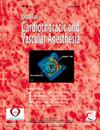AUDIT OF CENTRAL VENOUS CATHETER CARE AND MAINTENANCE IN A CARDIAC SURGERY UNIT
IF 2.3
4区 医学
Q2 ANESTHESIOLOGY
Journal of cardiothoracic and vascular anesthesia
Pub Date : 2024-10-25
DOI:10.1053/j.jvca.2024.09.026
引用次数: 0
Abstract
Objective
To audit central venous catheter care in our current practice based upon the current guidelines.
Design and method
The data was collected over a period of 15 days during the month of July 2023. All the patients in ITU were assessed at random times and the data regarding care and maintenance of central lines was noted. Bed side nursing staff was kept blind regarding the ongoing audit.
Results and conclusions
1. Total number of patients analysed N= 176
2. Number of central lines N= 229
3. Total number of lumens N= 799
4. Total number of lumens in use 63.95% (511/799)
5. 3-way tap turned OFF to patient (Y/N) 3.7% (130/5)
6. Blue clips applied when not in use (Y/N) 5.2% (128/7)
7. Caps missing for the 3 way taps (Y/N) 2.8% (5/171)
8. Integrity of central line dressing (Y/N) 10.8% (157/19)
9. Air in infusion bags 0 %
10. Air-eliminating filter on infusion tubing sets No
11. Air in line sensor in infusion pump No
12. Any tubing misconnections No
13. Any break in the closed system No
Conclusion
• The risk of venous air embolism can be reduced by regular education and training of staff, keeping up to date with the current guidelines and re-auditing regularly.
Recommendations
1. During insertion
• All lumens should be flushed and Luer–lock connections with self-sealing valves should be applied.
• CVP can be raised (to decrease the pressure gradient) by placing the patient in Trendelenburg position. The use of ultrasound can help to assess the degree of hydration and the need for Trendelenburg position.
• When no guide wire in place, the needle hub should be occluded with thumb.
• Line should be properly secured to the skin as accidental removal or partial removal can lead to air embolism.
2. Maintenance and care
• All connections should be tight, and all unused hubs are closed and locked when not in use.
• Regular inspection of the catheter for connections, cracks, or broken seals.
• Syringes should be fully primed and de-aired.
• Syringes should be kept vertical above the IV connector and not emptied completely.
• Infusion pumps should have air-in-line sensors for all continuous infusions.
• Fluid warmers, high volume resuscitation devices and extra-corporeal circuits should have bubble removal /warning systems.
• Special care during patient transfer or movement as accidental pulling of the catheter can lead to breakage or exposure of proximal orifice of multi-lumen catheter.
3. Removal
• The insertion site should be below the level of the heart at the time of removal.
• CVP can be raised during removal by keeping the patient in a head down or Trendelenburg position.
• Patients can perform Valsalva manoeuvre during removal, if possible. Otherwise remove the catheter during active expiration.
• The exit site should be covered with air-occlusive impermeable dressing for at least 24 hrs.
• Patient to remains supine for at least 60 min after central venous access removal.
• Establishment of a catheter removal protocol/checklist along with regular training.
对心脏外科中心静脉导管护理和维护的审计
设计和方法在 2023 年 7 月的 15 天内收集数据。在随机时间对 ITU 的所有患者进行评估,并记录有关中心静脉导管护理和维护的数据。床边护理人员对正在进行的审计工作视而不见。分析的病人总数 N= 1762。中心静脉置管数量 N= 2293管路总数 N= 7994。使用中的管路总数 63.95% (511/799)5。不使用时使用蓝色夹子(是/否) 5.2% (128/7)7.三通水龙头的盖子缺失(是/否) 2.8% (5/171)8.中心静脉敷料是否完整(是/否) 9.中心静脉敷料是否完整(是/否) 10.中心静脉敷料是否完整(是/否中心静脉敷料的完整性(是/否) 10.8% (157/19)9。输液袋中有空气 0 %10.输液管上的空气过滤器 否11.输液泵管路传感器中的空气 否12.任何管道连接错误 No13.NoConclusion- 通过对员工进行定期教育和培训、及时更新现行指南和定期重新审核,可以降低静脉空气栓塞的风险。插入过程中 - 应冲洗所有管腔,并使用带有自封阀的鲁尔锁连接。使用超声波可帮助评估患者的水化程度和是否需要采取 Trendelenburg 体位。维护和保养-- 所有连接处都应紧固,不用时应关闭并锁上所有未使用的轮毂。-- 定期检查导管的连接处、裂缝或密封圈是否破损。-- 注射器应充分填料并除锈。-- 注射器应保持垂直,高于静脉接头,且不能完全排空。- 所有连续输液的输液泵都应配备空气管路传感器。 - 液体加温器、大容量复苏装置和体外循环应配备气泡清除/警报系统。 - 在转移或移动患者时要特别小心,因为意外拉扯导管可能导致多腔导管近端管口破裂或暴露。移除导管 - 移除导管时,插入部位应低于心脏水平。 - 移除导管时,可让患者保持低头或 Trendelenburg 体位,以提高 CVP。否则应在主动呼气时拔出导管。 - 出口部位应使用不透气的敷料覆盖至少 24 小时。 - 拔出中心静脉通路后,患者应保持仰卧至少 60 分钟。
本文章由计算机程序翻译,如有差异,请以英文原文为准。
求助全文
约1分钟内获得全文
求助全文
来源期刊
CiteScore
4.80
自引率
17.90%
发文量
606
审稿时长
37 days
期刊介绍:
The Journal of Cardiothoracic and Vascular Anesthesia is primarily aimed at anesthesiologists who deal with patients undergoing cardiac, thoracic or vascular surgical procedures. JCVA features a multidisciplinary approach, with contributions from cardiac, vascular and thoracic surgeons, cardiologists, and other related specialists. Emphasis is placed on rapid publication of clinically relevant material.

 求助内容:
求助内容: 应助结果提醒方式:
应助结果提醒方式:


